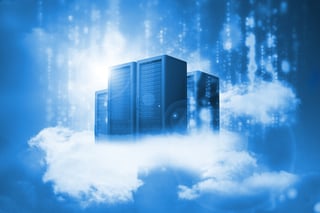From the Cloud to the Edge: Enterprise IT Moves Back Towards Decentralization
 In the era of artificial intelligence and the internet of things, it seems enterprises are returning to data processing ways of the past — and for good reason.
In the era of artificial intelligence and the internet of things, it seems enterprises are returning to data processing ways of the past — and for good reason.
Since the dot com boom of the 90s, data collection, management, storage, and analysis has happened in data centers, with IT professionals reasoning that consolidation brings efficiency. The advent of cloud computing only quickened the pace of data centralization.
But today, data created and managed by IT is increasingly joining data created and managed by operational technology (OT). The revolution of the Internet of Things (IoT), pervasive intelligence, and blockchain tech like Bitcoin is leading enterprise IT in a surprising direction: back towards the decentralization of information.
A New World
Data that relies on the interaction of IT and OT (concerning elements of and interactions with the physical world) is increasing in volume. The popularity of IoT devices like AI-powered home assistants and wearable biotech like FitBit is paving the way for a new world where data can be stored in far more places. According to 451 Research, data can be stored where it originated — on the device, perhaps — or on a nearby computing device, in an on-site micro data center, with cloud service providers, or with “in-the-middle” services like hosting platforms.
From all of these potential data housing units has come a resurgence of democratized data storage, as well as computing at “the edge,” a term that refers to “the point where these devices and things connect to the internet.” Edge computing is essentially processing data at the same site where it was created, and there are a number of factors about today’s IoT-influenced IT world that are leading enterprise IT teams to make the shift towards this processing and storage strategy.
Edging Your Bets
Senior VP Simon Robinson and Research Director Christian Renaud of 451 Research claim that “the rapid proliferation of data at the edge is leading organizations to think differently about how and where data storage and processing is handled.”
Here are some reasons cited by 451 Research for shifting toward the edge:
Real-time applications: Control-loop applications happening in real-time usually demand ultra-low latency, meaning it’s important for computational devices to be located as locally as possible to prohibit lags.
Cost efficiency: Bandwidth is expensive, and if unfiltered bits of low-value data from IoT devices are constantly transported to the cloud, money is lost on what is essentially “spamming.” Edge computing ensures data can be filtered first.
Bandwidth availability: Some IoT devices (such as technology on offshore oil rigs) lack reliable high-speed connections. They require local computing with functions to collect and store data to be sent upstream later, when a strong connection can be established.
Security and reliability: Decentralization lowers the stakes. Although many cloud providers are equipped with world-class security, no system is perfect, and OT professionals may still not trust centralized storage. After all, wide area networks (WAN) can still crash. “In the case of WAN failure,” says 451, “a remote site such as a factory or semi-truck can continue to operate independently absent a centralized analysis function."
Outdated systems translation: Legacy systems operating on non-IP/Ethernet connections need to connect to the IoT. Such systems demand “physical translation...in order for data to be ingested and analyzed, which can only be performed adjacent to the original device generating the data.”
Profitability: Studies estimate that “the fog computing opportunity will grow to be $18.2 billion by 2022,” $3.2 billion of which will be from the edge.
A Happy Medium
While the benefits of edge computing in the IoT era are undeniable, the need for data centralization will persist. Robinson and Renaud envision that an increase in edge computing will become, in essence, a network of much smaller data centers.
Still, they acknowledge the need for integration, and point out trends toward a unified solution: “Industrial companies have for a long time analyzed operational data at the edge, and the trend in IT has been toward centralized analysis — in the cloud or otherwise. There are two constituencies: the OT teams with their historical dependency on edge computing and analysis, and IT with its big-data-analytics cloud capabilities. The two are coming together to address IoT and digital transformation.” Indeed, many believe that the end of data centralization must lead to cloud-edge partnership, and that, ultimately, only a unified solution can lead to IoT success.
Partnering Up for the Future of Data
We’re still at the beginning of the data storage architectural shift sweeping the globe. With new, intelligent, OT-integrated technologies emerging every day, the IoT is expanding, and in turn, so is edge computing. In fact, many believe the rise of decentralizing practices will soon dismantle entire approaches to business. Enterprises want to decentralize their data, and now they need the infrastructure to do it.
In response to emerging trends much like edge computing, Turn-key Technologies has built a team of the most innovative network infrastructure experts in the industry over more than two decades. We can facilitate your enterprise’s transition to decentralization with a network reinforced by sophisticated security systems to protect your data. With more than a dozen professional certifications, we’re well-equipped to help you build a cost-efficient, high-speed network optimized for real-time application capabilities, so your enterprise can start living and computing on the edge.




